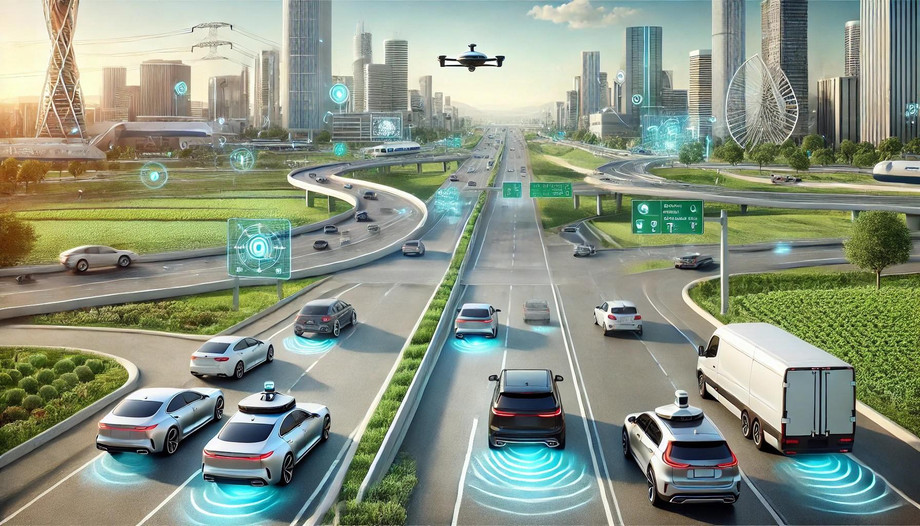Artificial Intelligence (AI) has permeated nearly every aspect of our lives, from the apps we use to the cars we drive.
In the logistics industry, AI is proving to be a powerful tool, particularly in car transport.
AI is not only enhancing the efficiency of operations but also significantly improving safety standards.
This article explores the role of AI in car transport, the benefits it brings, and the challenges that come with its adoption.
History of AI in Logistics:
AI's integration into logistics began with simple algorithms designed to optimize routes and manage inventories.
Over time, these algorithms have evolved into complex systems capable of learning and making decisions.
In car transport, AI is now being used to predict demand, optimize routes, and even drive vehicles autonomously.
Current Relevance:
In an industry where time, safety, and cost-efficiency are paramount, AI offers solutions that traditional methods simply cannot match.
For example, AI can analyze vast amounts of data to identify the most efficient routes, taking into account variables like traffic, weather, and road conditions.
This not only speeds up deliveries but also reduces fuel consumption and minimizes the risk of accidents.
Key Statistics/Facts:
- AI in the logistics industry is expected to reach $6.5 billion by 2023.
- Companies using AI in logistics report a 15-20% increase in operational efficiency.
Main Challenges/Considerations
Data Privacy and Security:
One of the biggest challenges in implementing AI is ensuring data privacy and security. AI systems rely on vast amounts of data to function effectively.
This data often includes sensitive information, such as customer details and vehicle locations.
Ensuring that this data is protected from breaches and unauthorized access is crucial for maintaining trust and compliance with regulations.
Initial Investment Costs:
Another significant challenge is the initial cost of implementing AI systems. Developing and integrating AI technology can be expensive, particularly for smaller companies.
The costs include not just the software itself, but also the necessary hardware, training, and ongoing maintenance. However, these costs can often be offset by the long-term savings in operational efficiency.
Technological Limitations:
While AI has made great strides, it is not without its limitations. For instance, AI systems can struggle with unexpected situations or anomalies that they haven't been specifically trained to handle.
Additionally, AI's reliance on data means that its effectiveness is directly tied to the quality and quantity of the data it has access to.
Poor data can lead to poor decision-making, which can negate the benefits of AI.
Solutions/Best Practices
Leveraging Predictive Analytics:
One of the most effective uses of AI in car transport is predictive analytics.
By analyzing historical data, AI can predict future demand for auto transport services, allowing companies to allocate resources more efficiently.
For example, AI can identify trends in vehicle shipments, helping companies anticipate busy periods and adjust their fleets accordingly.
Optimizing Routes with AI:
AI can also be used to optimize transport routes in real-time. By analyzing traffic patterns, weather forecasts, and other variables, AI can determine the most efficient routes for transporting vehicles.
This not only reduces delivery times but also minimizes fuel consumption and lowers the risk of accidents.
Examples/Case Studies:
- UPS: UPS uses AI to optimize its delivery routes, resulting in significant savings in fuel costs and a reduction in carbon emissions.
- DHL: DHL has implemented AI to predict demand and optimize its supply chain, improving delivery times and reducing operational costs.
Future Outlook/Trends
Expansion of AI's Role in Logistics:
As AI technology continues to evolve, its role in car transport is expected to expand.
Future developments may include AI systems that can autonomously manage entire fleets, from scheduling maintenance to coordinating deliveries.
These advancements could further reduce costs and improve the overall efficiency of car transport operations.
AI and Autonomous Vehicles:
The integration of AI with autonomous vehicles represents the next frontier in car transport. AI will play a crucial role in enabling these vehicles to navigate complex environments safely and efficiently.
As autonomous vehicles become more prevalent, the demand for AI systems that can manage and optimize their operation will grow.
Opportunities for Innovation:
The ongoing development of AI presents numerous opportunities for innovation in the car transport industry.
Companies that invest in AI research and development can create new services and solutions that set them apart from the competition.
This could include AI-driven platforms that offer real-time tracking, dynamic pricing, and predictive maintenance.
Conclusion
AI is transforming the car transport industry by enhancing safety and efficiency. Despite challenges like data privacy, initial costs, and technological limitations, the benefits of AI are clear.
From predictive analytics to route optimization, AI offers solutions that are helping companies deliver vehicles faster, safer, and more cost-effectively.
As AI technology continues to advance, its impact on car transport will only grow. Companies that embrace AI and invest in its development will be well-positioned to lead the industry into the future.
For car transport companies looking to stay competitive, now is the time to explore the potential of AI.
By integrating AI into your operations, you can improve efficiency, enhance safety, and ultimately, better serve your customers.

